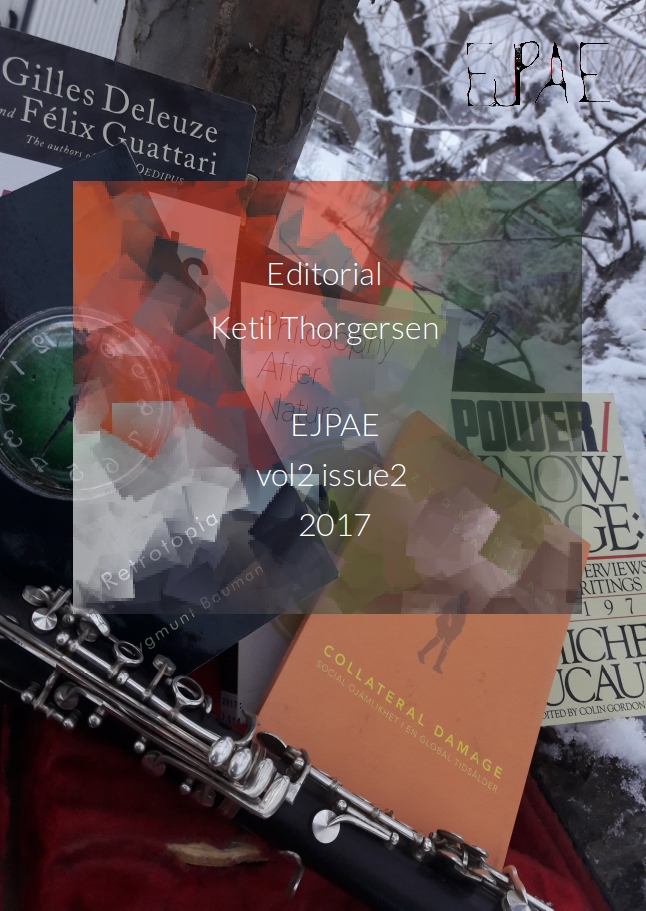Editorial EJPAE
Vol 02, Issue 02, 2017
Abstract
Welcome to the third ever issue of EJPAE. Slightly overdue, but as we say in Sweden, the one who waits for something good does not wait in vain. In this issue there are three articles that constitute the good we have been waiting for. The three articles complements each other in fulfilling the scope of EJPAE in that their foci are very different and that they represent different art forms. Two of the articles also create bridges to other areas of education, science and art.
Lee Beavington's article Romanticism and Science Education – Nature as a Poemreflects on how poetry writing and reading can be a tool in teaching and learning in science education - particularly connected to nature. This article is also an example of arts based writing and the text itself mixes a more traditional philosophical writing style with poetry of different kinds.
Another example of a crossover article comes from Sven Bjerstedt. In his article Musicality in Spoken Theatre – Fiction, Metaphor, Dispositif, he discusses how musical terms works as a certain kind of metaphorical linguistic repertoire to talk about artistic quality among theater actors. In his article he connects to the third article in this issue through his treatment of musicality. Interestingly, to be musical or to act musically, is considered essential for a good actor according to Bjerstedt, and in his definition he connects to a definition of relational musicality, coined by Sture Brändström in 2006, where musicality is not only something you are born with or something that is learnt, but rather a social agreement of what is considered musical in a particular culture. In a similar way musicality is also a central theme in the third article.
In Kari Holdhus and Magne Espeland's article Music in Future Nordic Schooling The Potential of the Relational Turn, the relationality that Bjerstedt is touching upon is treated in depth. Holdhus and Espeland draws on recent trends in educational discourses that shows a way towards a more relational approach to teaching and learning, and through analysing central texts about the present, pointing towards the future, they show possible futures for school music education. They warn against simplistic understandings of what knowledge formation is and can be: "The rationale for music as a compulsory subject in future public schooling could be improved by activating a web of music relations rather than reducing music education for children to a didactic triangle between the teacher, pupil and music."
This quote can also symbolise the complex web of meanings that arise through reading the three texts in this issue together. Enjoy the richness of the texts of nature, drama, music. Ride fast, read slow!
Ketil Thorgersen
Editor in Chief Stockholm January 20th 2018

Downloads
Published
Issue
Section
License
EJPAE provides immediate open access to all its published content. Users do not need to register or pay to read content.
https://creativecommons.org/licenses/by/4.0/
Authors of content published in European Journal of Philosophy in Arts Education (EJPAE) retain the copyright to their works. Content is free to be used by anyone as long as you "[...] give appropriate credit, provide a link to the license, and indicate if changes were made. You may do so in any reasonable manner, but not in any way that suggests the licensor endorses you or your use." and "No additional restrictions — You may not apply legal terms or technological measures that legally restrict others from doing anything the license permits." (from the Creative Commons licence agreement)
EJPAE does not charge any author or publication fees.
Authors are encouraged to deposit the final published version of their article for self-archiving (author's personal website) and/or archiving in an institutional repository immediately upon publication.




